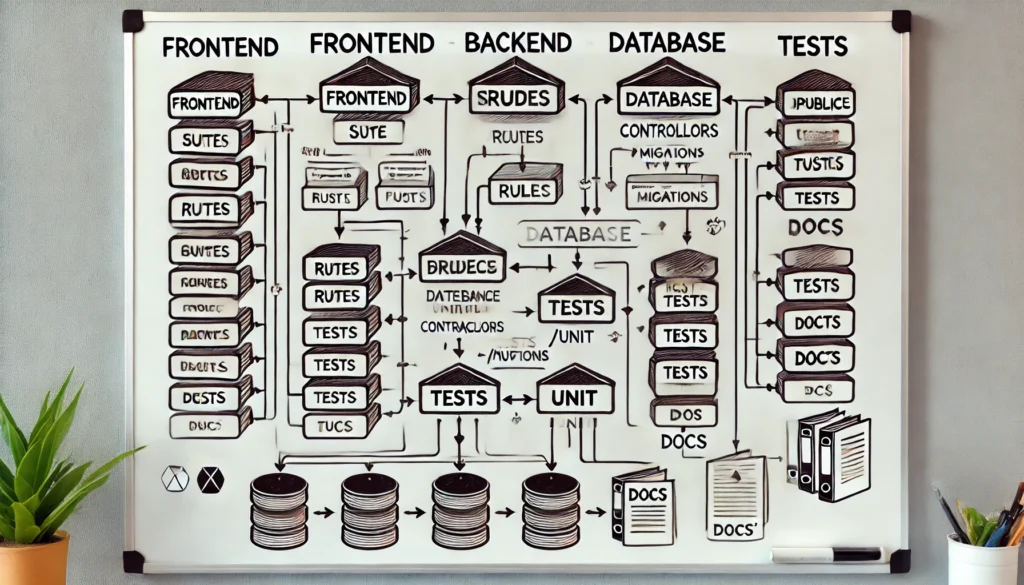
Introduction
One of the most critical aspects of full-stack development is organizing your project effectively. A unified directory structure can simplify collaboration, streamline development, and maintain consistency across your project. In this article, we’ll discuss how to structure a full-stack Node.js and React project within a single directory, ensuring clarity and scalability.
Why Use a Unified Directory Structure?
Combining your backend and frontend into a single directory has several benefits:
- Improved Collaboration: A clear structure helps team members understand the project quickly.
- Consistent Deployment: Simplifies deployment workflows by housing all components in one place.
- Ease of Maintenance: Centralized management reduces confusion and ensures easier updates.
- Scalability: A unified structure allows for straightforward expansion as your project grows.
Example Project Structure
Below is an example of a unified directory structure for a full-stack project:
project-root/
|-- client/ # React frontend
| |-- public/ # Public assets
| |-- src/ # React source files
| |-- components/
| |-- pages/
| |-- App.js
|-- server/ # Node.js backend
| |-- controllers/ # API logic
| |-- models/ # Database models
| |-- routes/ # API routes
| |-- server.js # Main server file
|-- functions/ # Serverless functions (optional)
|-- tests/ # Unit and integration tests
|-- package.json # Dependencies and scripts
|-- .env # Environment variables
|-- README.md # Project documentationDetailed Breakdown
1. client/
This folder contains your React frontend:
public/: Static files such as images, favicon, and index.html.src/: The core of your React application, including components, pages, and utilities.
2. server/
This folder contains your Node.js backend:
controllers/: Business logic for handling API requests.models/: Database schemas and models.routes/: Define API endpoints and link them to controllers.server.js: Entry point for your backend application.
3. functions/ (Optional)
If you’re using serverless architecture, this folder houses your serverless functions.
4. tests/
Store unit and integration tests for both frontend and backend here.
5. Root Files
package.json: Contains dependencies and scripts for both frontend and backend. Useworkspacesif managing multiple packages..env: Store environment variables securely.README.md: Project documentation and setup instructions.
Scripts for a Unified Workflow
Add scripts to the root package.json to simplify development:
{
"scripts": {
"start": "concurrently \"npm start --prefix client\" \"npm start --prefix server\"",
"build": "npm run build --prefix client",
"test": "jest"
},
"devDependencies": {
"concurrently": "^7.0.0"
}
}start: Runs both the backend and frontend simultaneously.build: Builds the React app.test: Runs tests for the entire project.
Tips for Maintaining a Unified Directory
- Use Linting and Formatting: Tools like ESLint and Prettier ensure code consistency across frontend and backend.
- Organize by Feature: Consider grouping files by feature instead of type for large projects.
- Document Everything: Maintain an up-to-date README with instructions for setup and development.
- Version Control Best Practices: Use branches for features and commits for atomic changes.
Conclusion
Structuring a full-stack project with a unified directory helps maintain clarity, reduces duplication, and streamlines the development process. Whether you’re building a small project or scaling up, this structure ensures a strong foundation for growth.
Have you tried using a unified directory structure? Share your experiences and tips in the comments below!


